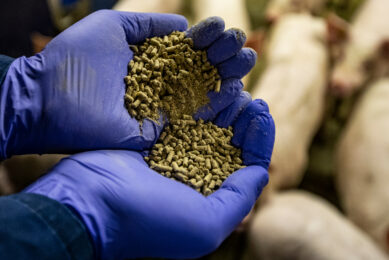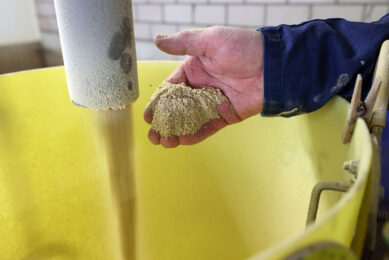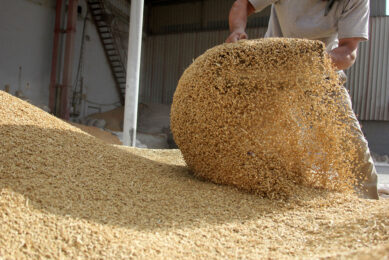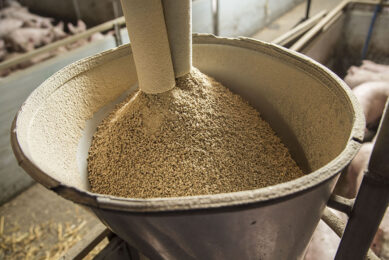Feed processing for dairy cattle
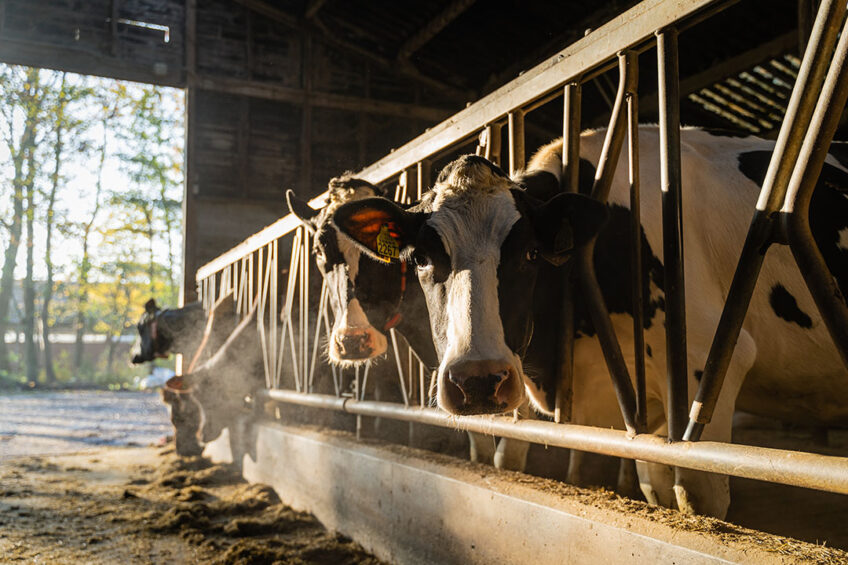
The following is a review of some physical and chemical methods used in feed processing, with particular emphasis on dairy cattle.
The processing method which supports better feed utilisation and animal production would be advantageous for dairy herds. Continuing evaluation of processing methods, with emphasis on the effect of processing on all nutrients and the economics of feeding programmes, will help identify the best method to use.
Heat processing
In one study, raw cottonseeds were heat treated at 149°C for 30 min. Heat processing increased the amount of rumen undegradable protein and fibre, and also maintained an ideal rumen pH and hence a better rumen environment for microbial activity. The ratio of rumen acetate to propionate was also increased, thus maintaining a higher milk fat percentage, since acetate is the main precursor of milk fat synthesis. This was probably because of the decreased degradability of the cottonseed fibre. Although heat processing reduced nutrient digestibility in the rumen, it did not affect total tract digestibility. In terms of animal performance, heat treatment has increased milk yield (18.7 kg/day versus 17.6 for the control: raw cottonseed) and has also increased the percentages of milk fat and protein (+ 0.32% and + 0.14%, respectively).
Heat treatment for 15 minutes can also be an effective means of controlling the free gossypol in the raw cottonseed which may otherwise cause respiratory distress, impaired body weight gain, anorexia, weakness, reduced animal resistance to infections, and impair the efficiency of vaccines, in addition to its adverse effects on reproduction and lactation performance. Long-term studies – especially with high-producing cows in early lactation – are, however, needed to elucidate any sound production responses to the heat processing of raw cottonseed.
Grinding
Grinding is the most widely used method of grain processing for dairy cows. It allows more effective mixing of milking ration components and also improves digestibility, although it may reduce milk production if the feed is ‘pulverised’. In other cases, however, milk production on finely ground grain was equal to or even higher than that obtained on coarsely ground grain. The variation here depends largely on the grain type and the interaction with the roughage that is fed with it. When finely ground and coarsely ground maize, for example, was fed with either long or ground hay, there was no difference in milk yield and composition between the two types of grain when fed with long hay, but there was a depression of milk fat when the finely ground maize was fed with ground hay. In another study with sorghum grain, fine grinding was found to increase its feeding value for milk production by about 8% compared to coarsely ground sorghum, regardless of the physical form of the roughage used in the diet.
Pelleting
Processing of feed in uniform durable pellets delivers significant benefits. The pelleting process increases the bulk density and reduces the segregation and dustiness of the feed, thus reducing losses during handling, transportation, and storage. In feeding terms, pelleting can increase the bulk density of the feed with less time and energy being expended for prehension. For lactating cows, however, feeding roughage in pelleted form results in reduced rumen acetate proportions (relative to propionic acid) and lower milk fat percentages. Total milk production may not be decreased because feedstuffs that are capable of causing low milk fat may also stimulate increased total milk production. When milk is sold based on its fat percentage, then the use of pelleted roughages may need to be restricted. In this case, pellets may be fed only in milking parlours because cows will eat more pellets in a short time while being milked.
Use of chemicals:
Formaldehyde
Treatment with formaldehyde is the most widely used process to protect protein against rumen degradation. The amount of formaldehyde applied should not be more than 2g per kg DM or digestibility in the intestine will be reduced. The use of formaldehyde at the recommended rate of application reduces degradability from 70% to about 30%, reduces the ammonia concentration in the rumen and urea concentration in the blood, increases the N flow to the lower gut, and decreases catabolism of essential amino acids in the rumen. An improved protein supply resulted in the expected improvement in milk production (Table 1) and reproductive efficiency (Table 2).
Potassium carbonate
The use of potassium carbonate as a drying agent can improve the drying rate of the cell wall of the stem material by breaking the waxy layer of the outer stem so that moisture can escape. This enables the stem to dry about as quickly as the leaf, i.e. the treated hay requires 34 hours to dry to 75% DM, while untreated hay requires more than 50 hours to dry. In this way, the chemical treatment can reduce the possibility of field losses by up to 70%, which makes it cost-effective.
Sodium hydroxide
The current state of the art is that the digestibility of roughage such as cereal straw can be increased by a moderate amount (i.e., increasing dry matter digestibility from about 40 to ±50%) by spraying with sodium hydroxide solutions. But this treatment may not be economically feasible in many cases unless roughage is in short supply.
Anhydrous ammonia
Treatment of straw with anhydrous ammonia will add N to the straw which can be used by rumen microorganisms; in addition, the digestibility of the straw will be increased, but not to the same extent as with sodium hydroxide. The ammonia method requires only that a stack of straw be covered so that ammonia does not escape. Since the method is quite simple, it is more likely to be widely used.
References are available from the author upon request.




